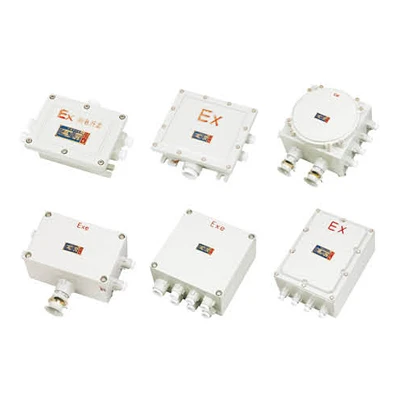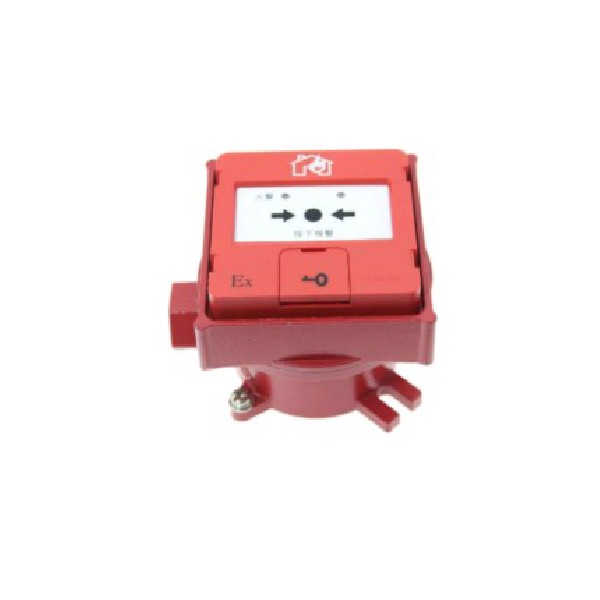Introduction

In the world of industrial and commercial electrical installations, understanding the significance of hazardous location cable glands is crucial. These specialized cable glands are designed to provide a safe and secure means of terminating cables in areas where the risk of explosion or fire is high. Whether it's a chemical plant, oil refinery, or mining operation, cable glands for hazardous locations play a vital role in ensuring the safety and integrity of electrical systems.
Understanding Hazardous Location Cable Gland
Hazardous location cable glands are specifically engineered to prevent the entry of flammable gases, vapors, or dust into electrical enclosures or equipment. They provide a barrier that seals off potential ignition sources and protects against the release of hazardous substances into the surrounding environment. This makes them an indispensable component in ensuring compliance with safety regulations and standards for hazardous area installations.
Importance of Cable Glands in Hazardous Areas
The importance of cable glands in hazardous areas cannot be overstated. These critical components serve as the first line of defense against potentially catastrophic events such as explosions or fires caused by electrical faults or external factors. By effectively sealing cables and providing strain relief, they help to maintain the integrity of electrical connections while minimizing the risk of dangerous incidents in volatile environments.
Exploring the Hazards of Cable Glanding
When it comes to working with cables in hazardous locations, there are inherent risks that must be carefully managed. Incorrect installation, inadequate protection against environmental elements, and using unsuitable materials can all lead to compromised safety and operational issues. Understanding these hazards is essential for selecting the right cable gland solutions that can withstand the challenges posed by specific hazardous area applications.
What is a Hazardous Location Cable Gland?

Hazardous location cable glands are crucial components used to secure and seal cables in hazardous areas, preventing the entry of dust, gas, or moisture. These specialized cable glands provide a safe and reliable method for routing and securing cables in environments where there is a risk of explosion or fire.
The Function of a Cable Gland
The primary function of a hazardous location cable gland is to provide a secure entry point for cables into equipment or enclosures while maintaining the integrity of the hazardous area's classification. By creating a barrier between the internal and external environments, cable glands help to prevent the spread of potential hazards such as gas or dust.
Types of Cable Glands for Hazardous Locations
There are various types of cable glands designed specifically for hazardous locations, including armoured cable glands, barrier cable glands, and compression type cable glands. Each type is engineered to meet specific requirements based on the conditions present in the hazardous area, ensuring optimum safety and performance.
Regulations and Standards for Cable Glands in Hazardous Areas
Cable glands used in hazardous locations must adhere to strict regulations and standards to ensure they can withstand the unique challenges presented by these environments. Compliance with codes such as ATEX, IECEx, NEC, and CSA is essential to guaranteeing that cable glands are suitable for use in potentially explosive atmospheres.
The Hazards of Cable Glanding

Potential Dangers in Hazardous Locations
When dealing with hazardous location cable glands, it's crucial to understand the potential dangers that come with working in these environments. These locations are at risk for explosive atmospheres due to the presence of flammable gases, vapors, or combustible dusts. Without proper cable glands, there is a high risk of ignition and potential catastrophic events.
Importance of Choosing the Right Cable Gland
The importance of choosing the right cable gland for hazardous locations cannot be overstated. A poorly selected or incorrectly installed cable gland can lead to leaks, which can allow flammable substances to enter electrical enclosures and create a dangerous situation. It's essential to choose a cable gland specifically designed and certified for hazardous areas to ensure safety and compliance.
Tips for Safe Installation and Maintenance
Safe installation and maintenance practices are critical when working with hazardous location cable glands. It's important to follow manufacturer guidelines and industry best practices when installing cable glands in these environments. Regular inspections and maintenance checks should also be conducted to ensure that the cable glands remain effective in containing potential hazards.
Cable Glands for Hazardous Area Applications

When it comes to hazardous locations, cable glands play a crucial role in providing safety and protection for electrical installations. These glands are commonly used in areas where flammable gases, vapors, or combustible dusts are present, such as chemical plants, oil refineries, and mining facilities.
Common Uses of Cable Glands in Hazardous Locations
Cable glands are used to secure and seal cables entering hazardous areas, preventing the ingress of moisture, dust, or gases that could potentially cause an explosion. They are essential for maintaining the integrity of the electrical system and ensuring the safety of personnel working in these environments.
Choosing the Correct Cable Gland for Specific Environments
Selecting the right cable gland is crucial for ensuring safety and compliance with regulations. Factors such as the type of hazardous substance present, temperature range, and cable material must be considered when choosing a cable gland for a specific environment.
Features to Look for in Hazardous Location Cable Glands
When selecting a cable gland for hazardous locations, it's important to look for features such as robust construction, corrosion resistance, and ingress protection ratings. Additionally, ensuring that the gland meets industry standards and certifications is vital to guarantee its suitability for use in hazardous areas.
Understanding Explosion Proof Cable Glands

When it comes to hazardous location cable glands, understanding what makes a cable gland explosion proof is crucial. Explosion proof cable glands are designed to contain any explosion within the enclosure and prevent the ignition of flammable gases or vapors in the surrounding atmosphere. This is achieved through robust construction and sealing techniques that ensure no sparks or flames escape from the equipment.
What Makes a Cable Gland Explosion Proof?
Explosion proof cable glands are typically constructed with flameproof enclosures that can withstand internal explosions without allowing flames to escape into the surrounding atmosphere. Additionally, they are designed with tight seals and secure fittings to prevent any flammable gases or vapors from entering the enclosure and coming into contact with potential ignition sources.
Benefits of Using Explosion Proof Cable Glands
The primary benefit of using explosion proof cable glands is the assurance of safety in hazardous locations where flammable substances are present. By containing any potential explosions within the equipment, these cable glands protect both personnel and property from harm and damage. Furthermore, they help facilities comply with stringent safety regulations for hazardous areas.
Comparing Different Types of Hazardous Cable Glands
When comparing different types of hazardous cable glands, it's important to consider their specific features and certifications for use in various hazardous environments. Factors such as ingress protection ratings, material compatibility, and temperature resistance should be evaluated to determine which type of cable gland is best suited for a particular application.
Harmonized Code for Cable Glands

When dealing with hazardous location cable glands, understanding harmonized codes is crucial for ensuring compliance with international standards. Harmonized codes provide a uniform system for classifying cable glands based on their specifications and intended use in hazardous areas, helping businesses and manufacturers navigate the complex landscape of regulations and requirements.
Importance of Understanding Harmonized Codes
Understanding harmonized codes is essential for selecting the right cable gland for hazardous locations. These codes provide valuable information about the construction, materials, and performance characteristics of cable glands, enabling users to make informed decisions that prioritize safety and compliance in hazardous environments. By identifying the correct harmonized code for cable glands, users can ensure that they are choosing products that meet the specific requirements of their application, whether it's related to temperature ratings, ingress protection, or resistance to corrosive substances. This level of detail is crucial in environments where even the smallest oversight can lead to serious consequences.
How to Identify the Correct Harmonized Code for Cable Glands
Identifying the correct harmonized code for cable glands involves carefully reviewing product documentation, consulting with industry experts, and staying updated on evolving regulatory standards. By familiarizing themselves with harmonized codes, businesses can confidently select cable glands that meet the specific requirements of their hazardous area applications.
Ensuring Compliance with Harmonized Codes
Ensuring compliance with harmonized codes involves thorough testing, documentation, and adherence to international standards such as ATEX or IECEx. By aligning their selection of cable glands with the appropriate harmonized codes, businesses can demonstrate a commitment to safety while mitigating the risks associated with non-compliant products in hazardous locations.
Conclusion

When it comes to hazardous locations, selecting the right cable gland is crucial for ensuring safety and compliance. Cable Glands for Hazardous Locations play a vital role in preventing potential dangers associated with cable glanding in these environments. Understanding the hazards of cable glanding is essential in choosing the correct type of cable gland for specific applications.
Selecting the Right Cable Gland for Hazardous Locations
Choosing the right cable gland for hazardous locations involves considering various factors such as the type of environment, potential risks, and applicable regulations. It's important to opt for Hazardous Cable Glands & Kits that are specifically designed and approved for use in these areas to minimize the risk of accidents and ensure proper protection against environmental hazards.
When selecting the right cable gland for hazardous locations, it's crucial to consider the specific type of environment in which the gland will be installed. Different environments, such as those with high levels of moisture or extreme temperatures, may require different types of cable glands to ensure proper protection. Additionally, understanding the potential risks present in the hazardous location is essential for choosing a cable gland that can effectively mitigate these risks and provide reliable safety measures.
Ensuring Safety and Compliance in Hazardous Area Environments
Safety and compliance are paramount in hazardous area environments, and using approved cable glands is essential for meeting regulatory requirements. Explosion proof cable gland options provide an added layer of protection against potential ignition sources, making them ideal for use in hazardous locations where flammable gases or vapors may be present.
In addition to providing protection against potential ignition sources, explosion proof cable glands also offer resistance to environmental factors such as moisture, dust, and corrosion. This makes them suitable for a wide range of hazardous area environments, including chemical plants, oil refineries, and industrial manufacturing facilities. By choosing the right cable glands for specific applications, companies can ensure the safety and compliance of their operations while minimizing the risk of accidents or downtime.
Exploring the Diverse Applications of Hazardous Location Cable Glands
Hazardous Location Cable Glands are used across a wide range of industries, including oil and gas, petrochemical, pharmaceutical, and mining. These specialized cable glands are designed to withstand harsh environmental conditions while providing secure cable entry points in hazardous areas. Understanding the diverse applications of these cable glands is essential for choosing the right solution for specific industry requirements.
In conclusion, understanding the hazards of cable glanding and selecting the appropriate type of cable gland is crucial for ensuring safety and compliance in hazardous area environments. By adhering to harmonized codes and regulations while choosing explosion proof options where necessary, industries can mitigate risks associated with electrical installations in potentially dangerous locations.

